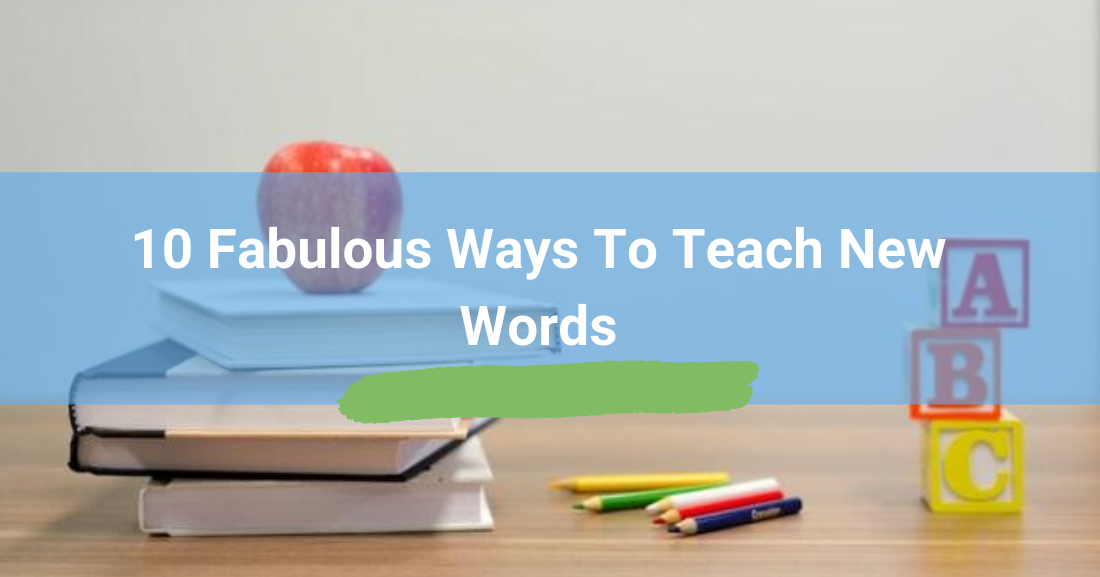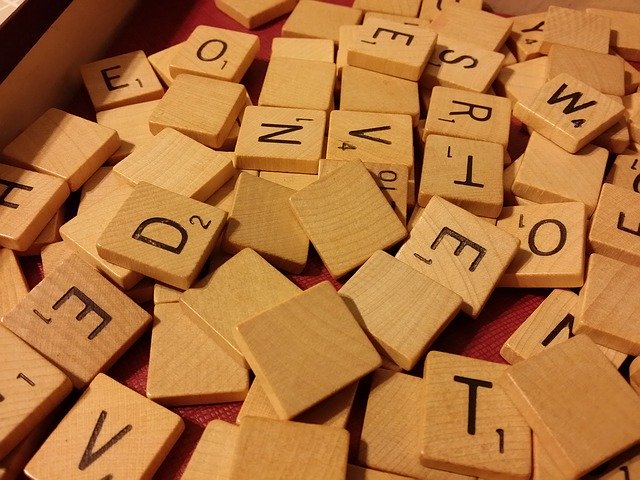Did you know that a student needs to encounter a new word 10 to 16 times to effectively "learn" it according to recent research?

Considering the number of new words students have to learn per course, this means us teachers have our work cut out for us. We all know that although it is important for students to use correct grammar and structures, words are the main carriers of meaning. This means that the more words students are able to handle accurately, the better their chances of understanding English and making themselves understood.
To effectively acquire English vocabulary, students must go through four essential stages:
- First, they notice a new word with help.
- Secondly, they recognize the word at first with help.
- Then, they recognize it later on their own.
- Lastly, they are able to both recognize and produce the word.
It is essential that you, as the teacher, make use of activities that target each of these stages; more often than not, we make the mistake of merely introducing new vocabulary, and we don’t give students the opportunity to put these new words to use.
So, here are 10 great ways to teach English vocabulary, outlined for each of the stages of vocabulary acquisition:
Stage 1: Noticing and understanding new words
 Introducing nouns, things, objects, animals, etc…
Introducing nouns, things, objects, animals, etc…
Visual elements work best with concrete nouns, but try to go beyond flashcards and illustrations. Try to use real objects whenever possible, or even sounds, smells, and tastes. Appeal to all of your students’ senses!
 Introducing adjectives
Introducing adjectives
Opposites, like “big” and “small”, “long” and “short”, are usually illustrated with pictures, but here’s another case where realia will help you teach new adjectives; the use of real life objects is wonderful for words like “soft” and “rough”, adjectives that may take precious minutes of class time to explain. For more advanced adjectives, like “stunning”, “gorgeous”, “spectacular”, “huge”, or “immense”, bring in photos of famous sights from around the world like the Louvre, Egyptian pyramids, the Eiffel Tower, etc…then use these new adjectives to describe these places in ways that clearly illustrate their meaning.
 Introducing abstracts
Introducing abstracts
There are things you simply cannot teach with a flashcard. What works best in these cases are synonyms, definitions, substitutions, or simply placing students within a given context. Consider this simple example: To teach the difference between “early” and “late”, remind students what time class begins, then state that those who arrive before this time are “early” while those that arrive after this time are “late”.
Stage 2: Recognizing new words

 Bingo
Bingo
Bingo is one of the most versatile games employed by ESL teachers. For younger learners, make bingo cards with illustrations, and call out each word. For those who can read, do the opposite, make the cards with words, then draw the flashcards from a bag. For teens or adult learners, you can make cards with the definition and call out the words, or vice versa.
 Matching
Matching
Another type of exercise with countless possibilities. Students may be required to match opposites, synonyms, or a word with its definition, as well as a picture to a word.
 Fill in the blanks (with options)
Fill in the blanks (with options)
Hand out a piece of written text (anything from a description, song, letter, to even a short story) with blank spaces that must be filled in from a list of words. You can adapt this to longer texts, and also have longer word lists.
Stage 3: Producing vocabulary
 Descriptions
Descriptions
From a newspaper photo of a recent event to a personal account of a recent trip, there are countless things students can describe while putting new vocabulary to good use. This goes for both oral and written descriptions. You may give them some guidance, like indicating that they have to use at least five adjectives in their description, or five words related to sports, weather, etc…to no guidance at all.
 Fill in the blanks (no options)
Fill in the blanks (no options)
Supply students with a piece of written text with blank spaces that have to be filled in with any word that fits. You may give them indications for each space, like “noun”, “adjective” or “adverb”, if they’re advanced students. You can then read several out loud to compare the different words used to fill in each blank.
 Mind maps or brainstorming
Mind maps or brainstorming
Tell students they need to think of words they can use to describe the weather. Write “weather” at the center of a blackboard or whiteboard and circle it. Write every word supplied by students as “rays” that shoot out this circle. They should reply with previously taught words, like “chilly”, “scorching”, or “mild”. You may even have sub-circles shooting off to the side for winter, summer, etc…words. This works great for vocabulary review lessons.
 Guess what I'm thinking
Guess what I'm thinking
Students take turns describing something, like a place: “I’m thinking of a place that is so huge it takes visitors hours to see all of it. It has stunning works of art. It is a breathtaking building, very old, but with a modern glass pyramid in the front.” Students choose to be as obvious or as cryptic as they like. Even little ones can do this with simple descriptions: “It's an animal. It has a very long neck and big brown spots.” Or simply state a series of words: “Africa, black and white, stripes”.
It’s better to teach vocabulary in context, in other words, teach highly descriptive adjectives when the lesson is about travel. Or clothes and accessories when you’re talking about shopping. Never teach a list of words just because, or students won’t have a chance to practice this new vocabulary.
On a final note, remember to cater to different learning styles or multiple intelligences.
Use songs and music, real life objects, or puzzles, but the more you mix the better. Remember the difference between recognizing and producing words: to practice recognition the words have to be supplied by YOU; then students use them to fill in blanks or match them. For students to effectively and accurately produce vocabulary, they have to spontaneously recall the words.
P.S. If you enjoyed this article, please help spread it by clicking one of those sharing buttons below. And if you are interested in more, you should follow our Facebook page where we share more about creative, non-boring ways to teach English.







